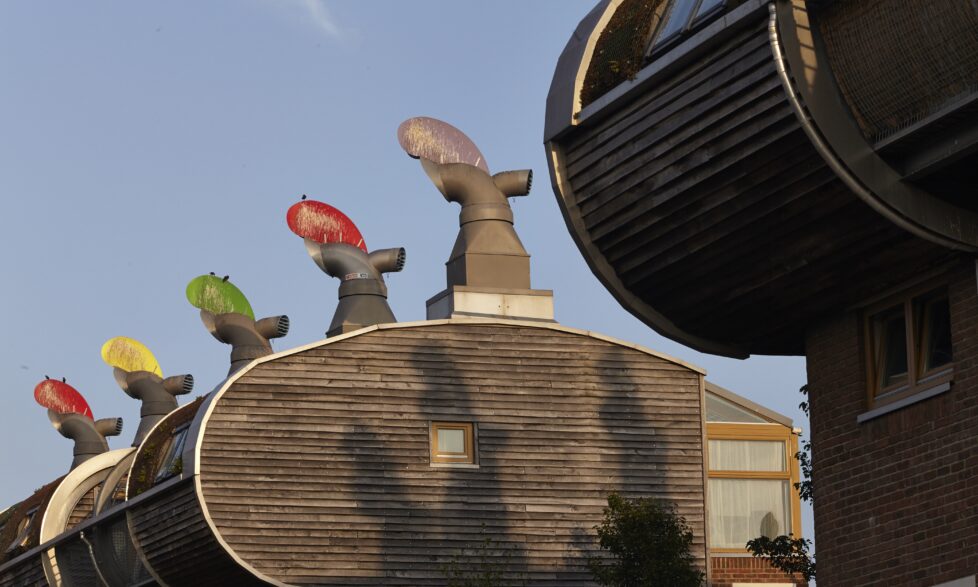Using sustainable building materials - lessons from BedZED
Materials in construction make up over half of our resource use by weight. They account for 30% of all road freight in the UK. The construction and demolition industries produce over 4 times more waste than the domestic sector, over a tonne per person living in the UK. The environmental impacts of extracting, processing and transporting these materials and then dealing with their waste are major contributors to greenhouse gas emissions, toxic emissions, habitat destruction and resource depletion.
Looking more specifically at the housing industry, the environmental impacts of the materials in a house are less significant than the actual performance of the house over its lifetime. Domestic household energy consumption accounts for 29% of the UK’s CO2 emissions. By comparison, the materials used in a house’s construction account for just 2-3%. Consequently, the BedZED scheme has been designed primarily for long term energy efficiency during use. It then goes further by minimising the embodied impacts of the construction materials used to achieve that design.
BedZED employs state of the art energy efficiency, with super-insulation, double and triple glazing and high levels of thermal mass. BedZED meets all its energy demands from renewable, carbonneutral sources, generated on site, and so eliminates the 29% contribution to CO2 emissions and global warming. In achieving this energy efficient carbon-neutral design, BedZED invests in more construction materials than standard houses. However, as this report shows, the embodied environmental impacts of BedZED’s construction materials are within the same range as standard UK housing. The total embodied CO2 of BedZED is 675kg/m2, whilst typical volume house builders build to 600-800kg/m2. Despite the increased quantities of construction materials, the procurement of local, low impact materials has reduced the embodied impact of the scheme by 20-30%.
The BedZED project has shown that in selecting sustainable building materials, major environmental savings can be made without any additional cost. In many cases, the environmental option is cheaper than the more conventional material. For example, highly durable timber framed windows are cheaper than uPVC and saved some 6% of the total environmental impact of the BedZED scheme and 12.5% of the total embodied CO2. Recycled aggregate and sand are cheaper than virgin equivalents and are available as off-the-shelf products. Pre-stressed concrete floor slabs save time and costs on site and by using less materials saved some 7% of the BedZED’s environmental impact compared with concrete cast in-situ. New FSC softwood from certified, sustainably managed woodlands is available at no cost premium, while local FSC green oak weatherboarding is cheaper than brick and shows a life cycle cost saving over imported preserved softwood. Reclaimed structural steel and timber are available cheaper than new and offer 96% and 83% savings in environmental impact.
BedZED sourced 3,404 tonnes of reclaimed and recycled materials, 15% of the total materials. All of the recycled and reclaimed materials used were either cheaper than the conventional option or the same price, even after additional staff time was spent on sourcing the material. High grade reclaimed materials such as doors or structural steel are not off-the-shelf products and there needs to be a willingness to work at securing a reliable supply of materials. Long lead times and storage space are particularly helpful in making reclaimed and recycled materials possible. BedZED’s local sourcing policy was able to source 52% of the materials from within the target 35 mile radius. The average sourcing distance was 66.5 miles. Compared with national average haulage distances, this was 40 miles less and saved 120 tonnes of CO2 emissions, some 2% of the scheme’s embodied CO2. The local sourcing policy cost nothing and required no specialist expertise.




